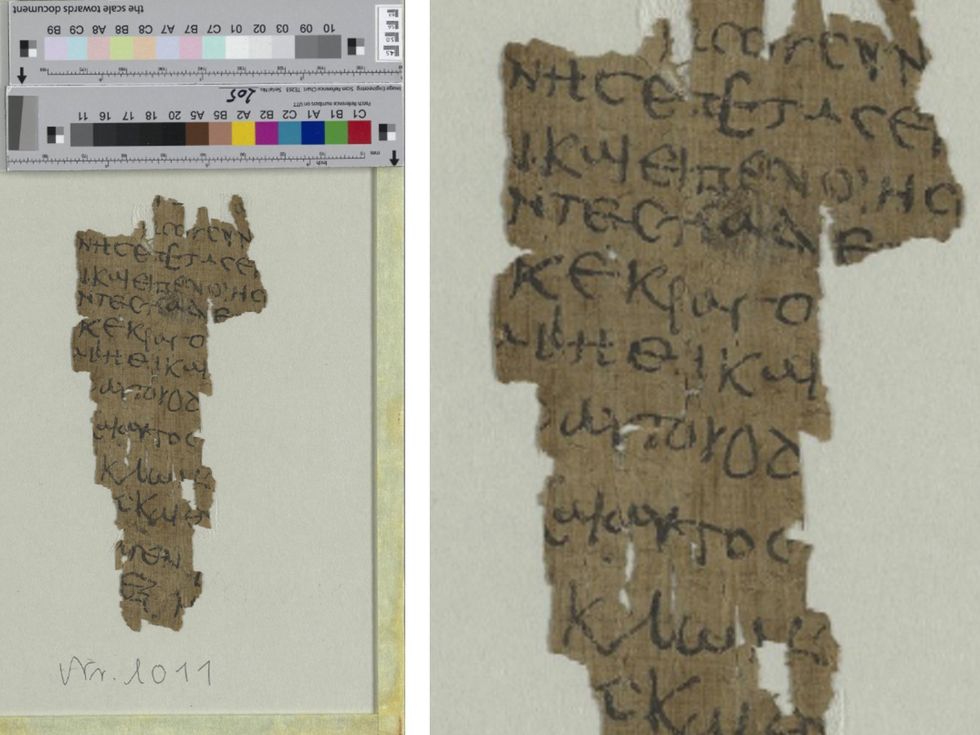Scholars have deciphered an ancient papyrus fragment that they believe contains the earliest account of Jesus’ childhood.
The fragment, which sat unceremoniously at the Hamburg Carl von Ossietzky State and University Library for decades, is believed to be a fragment from the Infancy Gospel of Thomas, an ancient apocryphal account that claims to tell the story of Jesus’ childhood from ages 5 to 12.
‘We deciphered it letter by letter and quickly realized that it could not be an everyday document.’
Scholars believe the Infancy Gospel of Thomas was written in the 2nd century, while the newly discovered Greek fragment is believed to be from the 4th or 5th century.
Dr. Lajos Berkes from the Institute for Christianity and Antiquity at Humboldt-Universität zu Berlin and professor Gabriel Nocchi Macedo from the University of Liège made the discovery.
“The fragment is of extraordinary interest for research,” Berkes said. “On the one hand, because we were able to date it to the 4th to 5th century, making it the earliest known copy. On the other hand, because we were able to gain new insights into the transmission of the text.”
The earliest previous known manuscript copy of the Infancy Gospel of Thomas is dated to the 11th century.
“Our findings on this late antique Greek copy of the work confirm the current assessment that the Infancy Gospel according to Thomas was originally written in Greek,” Macedo said.

According to Berkes, the reason the manuscript fragment went unnoticed is because researchers originally thought it was an “everyday document.”
“It was thought to be part of an everyday document, such as a private letter or a shopping list, because the handwriting seems so clumsy,” Berkes explained. “We first noticed the word Jesus in the text. Then, by comparing it with numerous other digitized papyri, we deciphered it letter by letter and quickly realized that it could not be an everyday document.”
More from the Humboldt-Universität zu Berlin press release:
The two researchers assume that the copy of the Gospel was created as a writing exercise in a school or monastery, as indicated by the clumsy handwriting with irregular lines, among other things.
The few words on the fragment show that the text describes the beginning of the “vivification of the sparrows,” an episode from Jesus’ childhood that is considered the “second miracle” in the apocryphal Gospel of Thomas: Jesus plays at the ford of a rushing stream and moulds twelve sparrows from the soft clay he finds in the mud. When his father Joseph rebukes him and asks why he is doing such things on the holy Sabbath, the five-year-old Jesus claps his hands and brings the clay figures to life.
The Infancy Gospel of Thomas was a popular text in the early and Medieval Christian church. However, early church leaders considered the composition to be fictional and heretical.
The text is distinct from the well-known Gospel of Thomas.
Like Blaze News? Bypass the censors, sign up for our newsletters, and get stories like this direct to your inbox. Sign up here!
